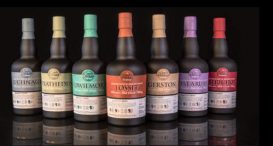Some further thoughts on the NAS debate.
let’s begin
I published a much-read and enjoyed piece in 2015 about the NAS debate, from time to time I ponder it again and thought I might as well publish some additional thoughts in case it sparks conversation.
Is the Scottish Whisky industry running out of real Whisky?
It’s common sense; waiting for every malt’s coming of age party before it can be bottled puts limitations on proceedings. There are only so many times 21 years come to pass, usually once every couple of decades or so.
It’s not really that we’re running out, more that we have to be willing to be patient, because no one could have predicted this level of demand 20 years ago. But yes, there is a lack of mature stock, and that has prompted the NAS trend.
Of course there are some cases, such as the Rosebank Distillery in the Scottish Lowlands, where production has closed down and we’re feasting on the last of the nectar as it comes to maturation. But there are also new distilleries hoping to begin production, such as Shetland’s Blackwood Distillery in Scotland.
Why did they start producing NAS?
In addition to the lack of mature stock and closing distilleries, NAS has arguably come to pass in an attempt to make Whisky production more creative and shift the ‘focus’ from age to other aspects.
However, there are financial motives, because this is planet Earth. Every year that stock matures, 2% of the liquid a year evaporates, known as the angel’s share. Sharing with the angels is expensive, and the younger the Whisky, the more we can ensure the angel’s don’t take their milkshake from our yard.
How do you spot an NAS?
If you don’t spot an age on the label, you’ve spotted an NAS Whisky. Hey presto, if only bringing yourself to drink one and escaping the stigma was that easy.
The spirits are usually given a clever, distracting name in place of their age. Classic offenders include things such as ‘Traditional Cask’ (it’s age-old tradition, the same, nothing to see here), ‘Four Wood’ (who cares about years when you can count trees?) or something flash and Gaelic like ‘Cairdeas’ (which could, in some fictitious realms, mean ‘really old’).
In NAS’ defence, their names generally denote their focus. So once you’re over the fact that you’re having an affair with a spring chicken, which generally people manage to do in life, you can enjoy finding out about this malt’s alternative forte.
Tags: additional notesDrinkWiremaltNASNAS whiskyScottish whisky
Greg
My name is Greg, and I’m a brand strategy consultant, writer, speaker, host and judge specialising in premium spirits. My mission is to experience, share and inspire with everything great about whisky, whiskey, gin, beer and fine dining through my writing, my brand building and my whisky tastings.














